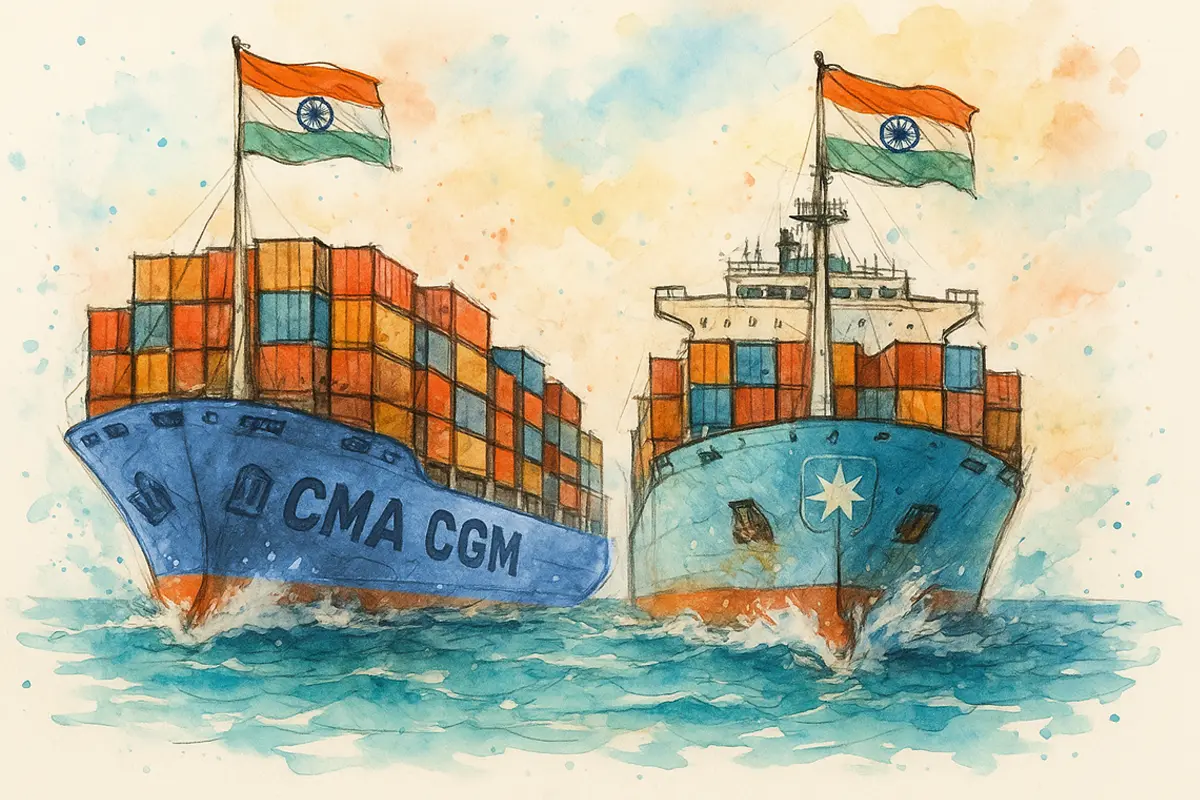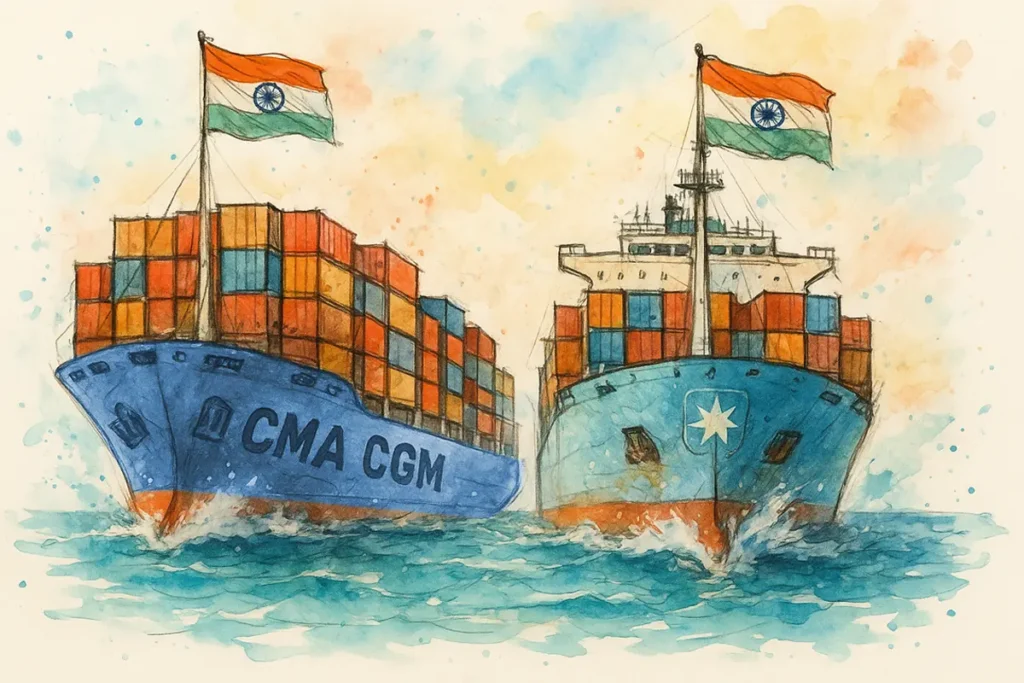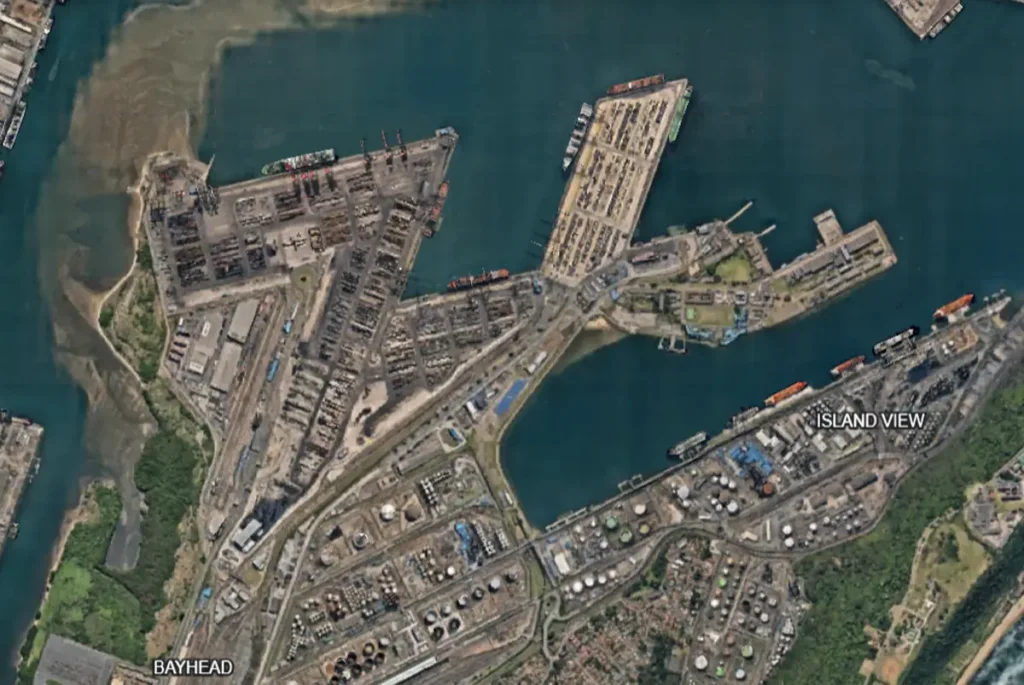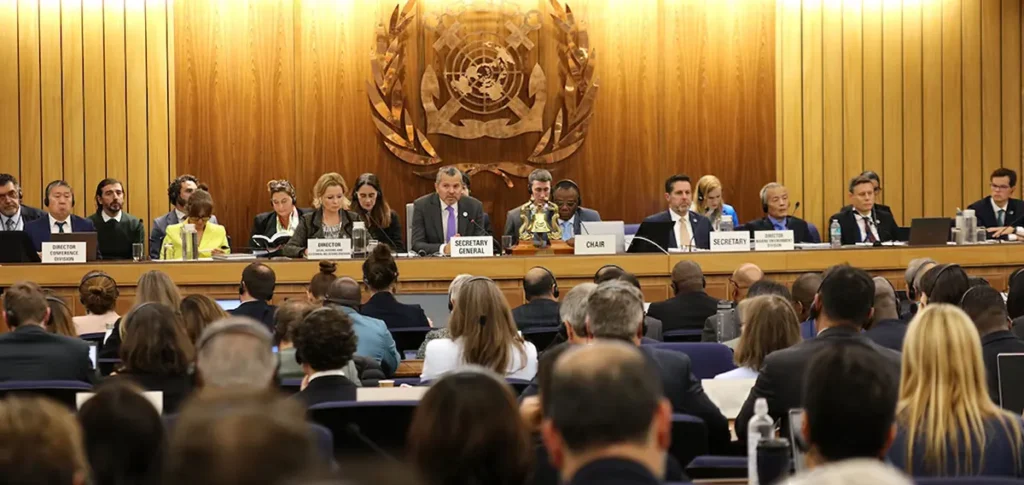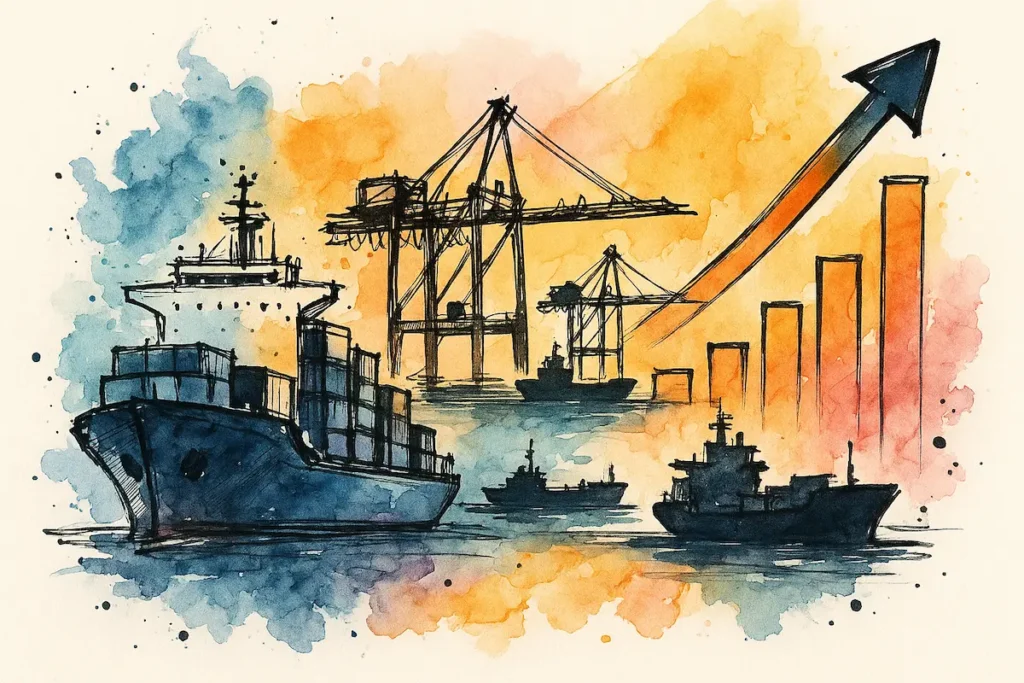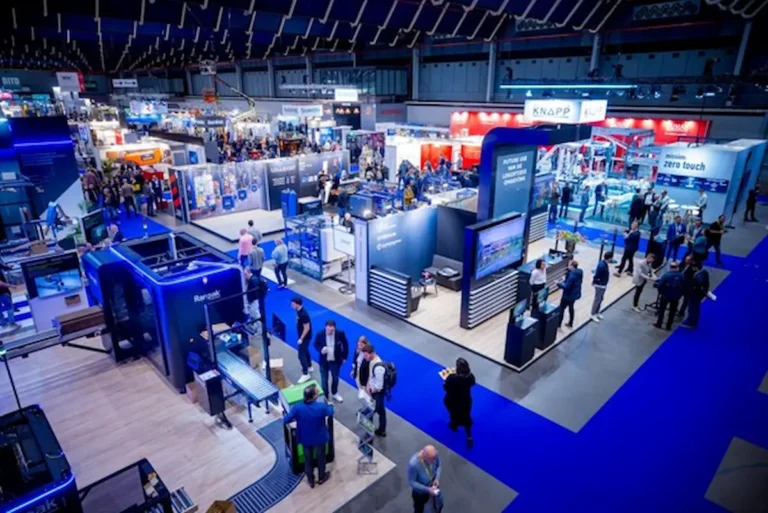India’s maritime sector is strengthening its position within global shipping frameworks. The decision by A. P. Moller-Maersk to shift two container vessels to the Indian flag registry marks a tangible step in this direction.
According to regulatory filings, the Maersk Vilnius (1,810 TEU) and Maersk Vigo (1,740 TEU) have been transferred to the Indian flag under Maersk Bharat IFSC Private Limited, a GIFT City-based entity. This development places Maersk among a growing group of major carriers aligning elements of their fleet with India’s jurisdiction.
Strategic relevance of the flag shift
Historically, India has operated as a cargo-origin and consumption market without a proportional share of Indian-flagged commercial tonnage. The move by a global liner highlights three key trends:
- India’s efforts to build a more competitive flag regime are gaining recognition
- GIFT City is emerging as a viable centre for ship ownership and finance structures
- Regulatory and compliance expectations worldwide are prompting reassessment of flag choices
These factors collectively strengthen India’s profile as a credible option for vessel registration.
CMA CGM flagged CMA CGM Vitoria in India earlier this year and is involved in additional capacity development, including India-built dual-fuel container vessels. This indicates growing interest from carriers beyond traditional Indian operators.
Policy alignment with national objectives
The increase in Indian-flagged vessels supports longer-term strategic priorities:
- Increasing the share of Indian-controlled and India-flagged tonnage
- Supporting shipbuilding and lifecycle capability through partnerships such as Cochin Shipyard
- Developing financial and maritime service clusters in GIFT City
- Improving operational self-reliance and global connectivity
- Building readiness for domestic risk and liability management frameworks, including a future P&I structure
These measures are part of a coordinated effort to enhance India’s maritime competitiveness.
Insurance and liability considerations
Discussions around establishing an Indian Protection & Indemnity (P&I) club continue to highlight the need for adequate tonnage to support actuarial and underwriting requirements. The addition of vessels from major carriers contributes positively to the scale needed for such a solution.
Impact on the supply chain ecosystem
Potential outcomes from increased Indian-flagged tonnage include:
- More locally anchored ship-finance and leasing opportunities
- Reduced reliance on foreign jurisdictions for repair, maintenance, and certification
- Improved alignment of disputes, compliance, and documentation requirements within Indian legal frameworks
- Opportunities for domestic service providers in crew management, classification, and digital compliance
- Strengthened competitiveness in global freight markets due to jurisdictional efficiency
These effects will materialise progressively as more assets align under Indian regulatory systems.
Sustaining progress
To maintain momentum, India will need to ensure:
- Transparent and stable regulatory processes
- Cost-efficient flag-related services
- Streamlined digital and operational procedures for shipowners
Ongoing reforms will determine India’s ability to attract additional tonnage from international operators.
Conclusion
Maersk’s re-flagging of two vessels represents a measurable shift in how global carriers engage with India’s maritime sector. Combined with growing investment and operational alignment by lines such as CMA CGM, this development supports India’s objective to strengthen its role in global shipping governance and capability.
India’s progress is incremental and based on structural improvements. Continued policy consistency and competitiveness will influence whether more global operators adopt the Indian flag as part of their long-term fleet strategy.

